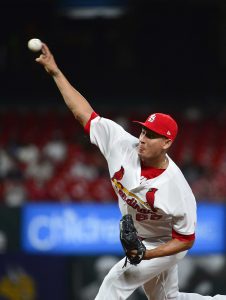10:38pm: Wong has a mild hamstring strain, Derrick Goold of the St. Louis Post-Dispatch reports. He’ll undergo an MRI on Friday.
8:29pm: The NL Central-leading Cardinals suffered a notable injury during their game against the Cubs on Thursday. Second baseman Kolten Wong departed with a left hamstring issue, as Mark Gonzales of the Chicago Tribune was among those to report. He’s day-to-day. The Cardinals shifted third baseman Tommy Edman to second in place of Wong and plugged in Matt Carpenter at the hot corner.
The Cardinals, who lead the Cubs in their current matchup as of this writing, entered Thursday with a three-game advantage in the division. Their success has come thanks in part to Wong, who has racked up 3.7 fWAR and slashed .285/.361/.423 with 11 home runs and 24 stolen bases (28 attempts) across 549 plate appearances. He’s clearly not someone St. Louis wants to go without for any period of time as it attempts to earn its first division title since 2015.
If the Redbirds do lose Wong beyond Thursday, it seems they’ll continue with the hot-hitting rookie Edman at the keystone and Carpenter at third. Carpenter’s a longtime Cardinals star, but he has endured a surprisingly mediocre campaign in 2019 and fallen behind Edman on the team’s late-season depth chart at the hot corner.

